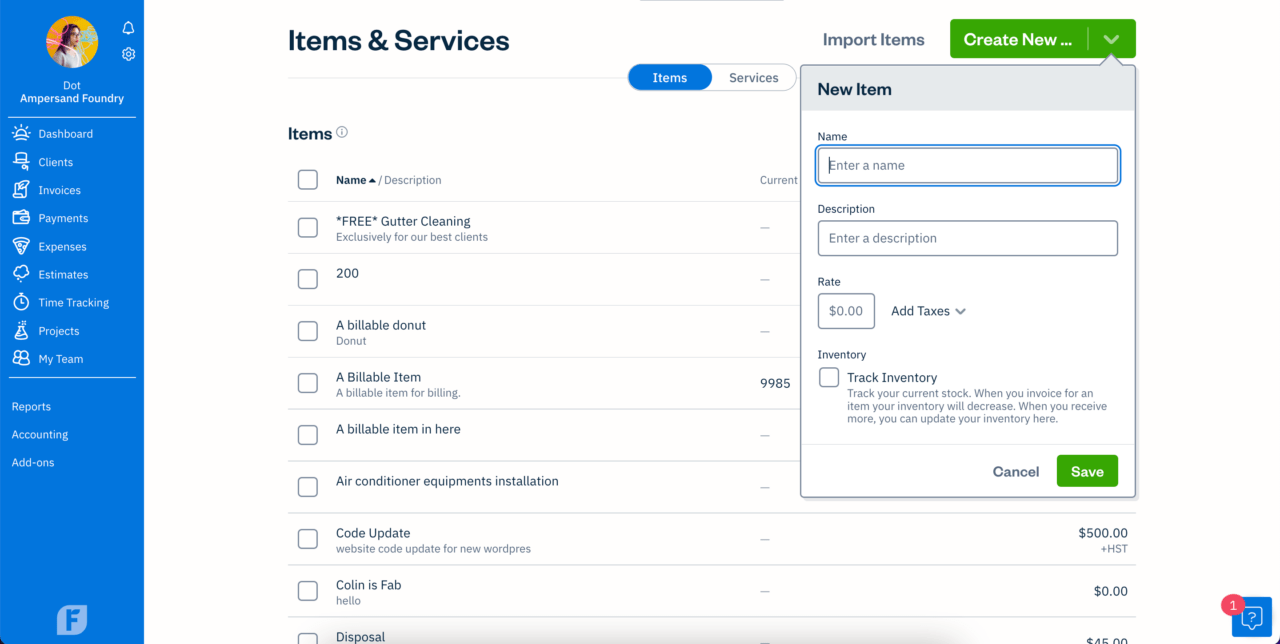Managing small business inventory with software is a smart move. It saves time and reduces errors.
In today’s fast-paced business world, efficient inventory management is crucial. Small business owners must keep track of stock levels, sales, and orders. Doing this manually can be overwhelming. That’s where inventory management software comes in. It helps streamline processes, making it easier to monitor and control your inventory.
With the right software, you can avoid stockouts, reduce excess inventory, and improve customer satisfaction. Plus, it provides real-time data, allowing you to make informed decisions. In this post, we’ll explore how to manage small business inventory with software, ensuring your business runs smoothly and efficiently.

Credit: www.dislio.com
Importance Of Inventory Management
Effective inventory management is crucial for small businesses. It helps maintain a balance between supply and demand. Proper management ensures that you have the right products available at the right time. This reduces costs and maximizes profits. Inventory management software can simplify this process. It provides real-time data and automates tasks. Let’s explore why inventory management is important for your business.
Avoiding Stockouts
Stockouts happen when inventory runs out. They can lead to lost sales and unhappy customers. By using inventory management software, you can track stock levels accurately. The software alerts you when stock is low. This ensures you reorder in time, avoiding stockouts. Satisfied customers are more likely to return and recommend your business.
Reducing Excess Inventory
Excess inventory ties up capital. It can lead to increased storage costs and unsold products. Inventory management software helps monitor inventory levels. It provides insights into sales trends and customer demand. This data helps you make informed decisions. You can reduce excess inventory and free up capital for other needs. This leads to a more efficient and profitable business.

Credit: www.freshbooks.com
Choosing The Right Software
Managing small business inventory can be challenging. To simplify this, choosing the right software is crucial. The right software can automate tasks, reduce errors, and save time. Let’s explore the essential aspects to consider.
Key Features To Look For
When selecting inventory management software, focus on the following features:
- Real-Time Tracking: This feature updates inventory levels instantly.
- Barcode Scanning: Speeds up the process of data entry.
- Multi-Location Management: Manages inventory across several locations.
- Reporting and Analytics: Provides insights into inventory trends.
- Integration: Should integrate with your other business tools.
Budget Considerations
Budget is a critical factor in choosing software. Here are some tips:
- Determine Your Needs: List your must-have features.
- Compare Pricing Plans: Look for software within your budget.
- Consider Hidden Costs: Check for costs like training and support.
- Opt for Free Trials: Use trials to test the software before buying.
Let’s look at a comparison table of features and costs:
| Software | Key Features | Price |
|---|---|---|
| Software A | Real-Time Tracking, Barcode Scanning | $50/month |
| Software B | Multi-Location Management, Reporting | $75/month |
| Software C | Integration, Real-Time Tracking | $100/month |
Choosing the right software is key to managing your inventory effectively. Focus on features and budget to make the best decision.
Setting Up Your Software
Managing your small business inventory can be complex without the right tools. Inventory software simplifies this process, ensuring accuracy and efficiency. Setting up your software correctly is the first step to seamless inventory management.
Initial Configuration
The initial configuration of your inventory software is crucial. Start by customizing the software to fit your business needs. This includes setting up product categories, defining stock levels, and configuring notifications for low stock.
- Product Categories: Organize your products into logical categories.
- Stock Levels: Define minimum and maximum stock levels for each item.
- Notifications: Set up alerts for low stock to avoid shortages.
These steps ensure your inventory software aligns with your business operations. Proper configuration saves time and reduces errors.
Data Migration
Data migration involves transferring existing inventory data into your new software. This step requires attention to detail to ensure data accuracy.
Here’s a simple process to follow:
- Export Data: Export your current inventory data from spreadsheets or other systems.
- Clean Data: Review the data for any errors or duplicates.
- Import Data: Use the software’s import feature to upload your cleaned data.
A successful data migration means your new system will be up-to-date from the start.
| Step | Description |
|---|---|
| Export Data | Extract current inventory data. |
| Clean Data | Remove errors and duplicates. |
| Import Data | Upload data to the new system. |
With accurate data, your inventory management becomes more reliable.
Inventory Tracking Methods
Managing inventory is crucial for small businesses. Efficient tracking methods can improve accuracy and save time. Modern software offers various ways to track inventory. In this section, we’ll discuss two popular methods: Barcode Scanning and RFID Technology.
Barcode Scanning
Barcode scanning is a common inventory tracking method. Each item gets a unique barcode. Scanners read these barcodes to update inventory records. This process is fast and reduces human error. It helps in maintaining accurate stock levels. Businesses can quickly find out what items are in stock. They can also identify which items need to be reordered.
Rfid Technology
RFID stands for Radio Frequency Identification. This method uses tags and readers. RFID tags are attached to items. These tags store information about the items. RFID readers scan the tags to update inventory records. Unlike barcodes, RFID does not need a direct line of sight. It can scan multiple items at once. This speeds up the inventory process. RFID is useful for tracking large quantities of items. It provides real-time updates on inventory levels.
Automating Inventory Processes
Small businesses can manage inventory efficiently with software. Automating tasks saves time and reduces errors. This helps in tracking stock levels accurately.
Managing small business inventory can be time-consuming. Inventory software helps by automating many processes. Automation reduces human error. It saves time. It helps keep track of stock levels accurately. This means you can focus on growing your business.
Order Management
Efficient order management is vital. Inventory software tracks orders from start to finish. It updates stock levels automatically. You can monitor sales and purchase orders in real-time. This ensures you never miss an order. It also helps in maintaining accurate records.
Reordering Alerts
Running out of stock is a common problem. Inventory software provides reordering alerts. It notifies you when stock is low. This helps you reorder products on time. You can set minimum stock levels. The software will then alert you when levels drop below the set limit. This ensures you always have enough stock to meet demand.
“`
Integrating With Other Systems
Managing inventory for a small business can be challenging. By integrating inventory software with other systems, you can streamline operations. This integration helps in reducing errors, saving time, and improving accuracy.
Accounting Software
Connecting your inventory software with accounting software offers many benefits. It ensures real-time updates on stock levels and financial data. This integration can help you:
- Track expenses and income accurately
- Generate financial reports effortlessly
- Maintain compliance with tax regulations
For example, QuickBooks and Xero are popular choices. They sync seamlessly with many inventory management systems. This connection can prevent overselling and stockouts.
E-commerce Platforms
Integrating inventory software with e-commerce platforms is crucial for online stores. This integration helps in managing stock levels across multiple channels. Key benefits include:
- Automatic stock updates
- Streamlined order processing
- Improved customer satisfaction
Popular platforms like Shopify and WooCommerce can integrate with inventory software. These integrations ensure that your online store reflects accurate stock levels. This can reduce the risk of overselling and improve customer trust.
In summary, integrating your inventory software with accounting and e-commerce systems can significantly enhance your business operations. It ensures accuracy, saves time, and improves overall efficiency.
Monitoring Inventory Levels
Monitoring inventory levels is crucial for small business success. Using software can make this task efficient and accurate. This ensures you always have the right amount of stock. It also helps avoid overstocking and stockouts. Below are important aspects of monitoring inventory levels using software.
Real-time Tracking
Real-time tracking allows you to see inventory levels instantly. This means you can respond quickly to changes in demand. Software updates stock levels as sales happen. This feature also helps prevent errors caused by manual tracking. Real-time data gives you a clear picture of your inventory at any moment.
Inventory Audits
Regular inventory audits ensure your records match actual stock. Software simplifies this process by providing detailed reports. Automated audits save time and reduce human error. Accurate audits help detect any discrepancies early. This means you can address issues before they become big problems.
Analyzing Inventory Data
Managing small business inventory becomes easier with the right software. Analyzing inventory data helps you understand what you have and what you need. It’s crucial for making smart decisions. With software, you can dig deep into your inventory data and find valuable insights.
Identifying Trends
One key benefit of analyzing inventory data is spotting trends. You can see which products sell fast and which don’t. This helps you plan better. With software, you can track sales patterns over time. You’ll know what items to stock more and what to reduce. This keeps your inventory balanced and cuts down on waste.
Making Data-driven Decisions
Data-driven decisions are smarter decisions. Inventory software provides real-time data. You can make quick and informed choices. For example, you can decide on restocking based on accurate data. This avoids overstocking or running out of stock. Using data helps in setting reorder points and managing supplier relationships. It ensures your business runs smoothly without hiccups.
Best Practices For Inventory Management
Effective inventory management is crucial for small businesses. It ensures smooth operations and helps reduce costs. Using software for inventory management can streamline the process. But knowing best practices makes a significant difference.
Regular Training
Training employees on inventory software is important. It ensures they use the system correctly. Regular training sessions keep everyone updated. New features and updates need to be explained. This helps prevent errors and improves efficiency.
Continuous Improvement
Inventory management should evolve. Gather feedback from employees. Identify areas needing improvement. Use this feedback to refine processes. Regularly review inventory data. Look for trends and patterns. Adjust strategies to optimize inventory levels. This ensures the business stays competitive.

Credit: thecfoclub.com
Frequently Asked Questions
What Is Inventory Management Software?
Inventory management software helps track and manage stock levels, orders, and deliveries.
How Does Inventory Software Benefit Small Businesses?
It reduces human errors, saves time, and improves stock control and reporting.
Can Inventory Software Integrate With Other Business Tools?
Yes, it often integrates with accounting, sales, and e-commerce platforms.
Is Inventory Management Software Easy To Use?
Most are user-friendly with simple interfaces, designed for non-tech-savvy users.
How Much Does Inventory Management Software Cost?
Costs vary. Some offer free basic plans, while advanced features may require a subscription.
Does Inventory Software Support Mobile Access?
Yes, many solutions offer mobile apps for on-the-go inventory management.
Conclusion
Managing small business inventory with software improves efficiency. It saves time and reduces errors. Software solutions streamline processes and enhance accuracy. Business owners can focus on growth. Inventory software provides real-time insights. This helps in making informed decisions. Implementing the right tool boosts productivity.
It also ensures better customer satisfaction. Start using inventory software today. Your business will thank you.
